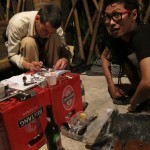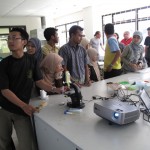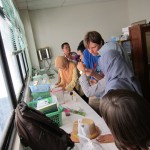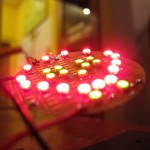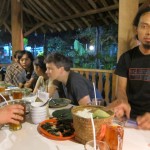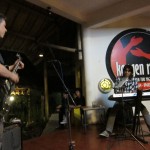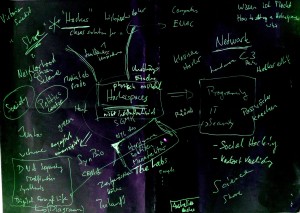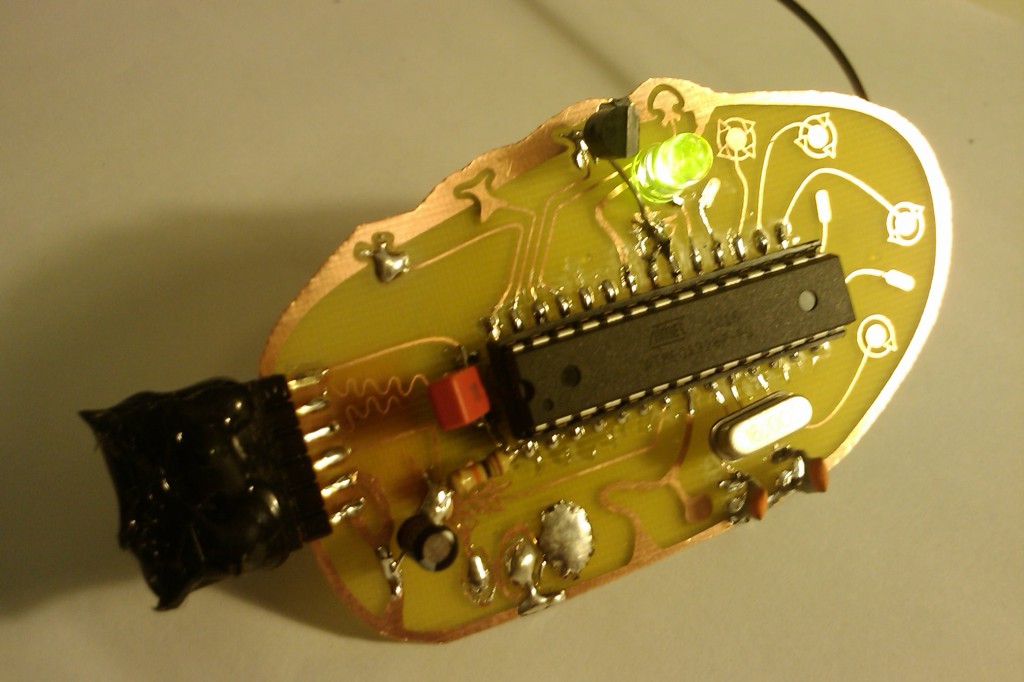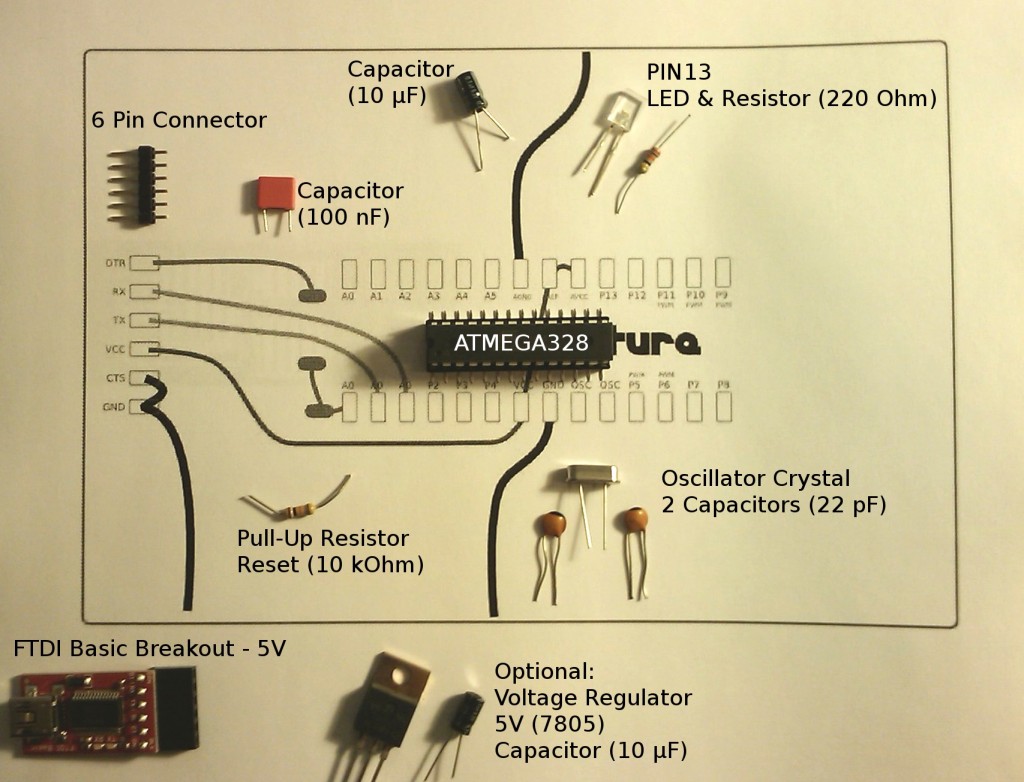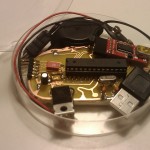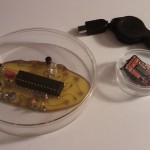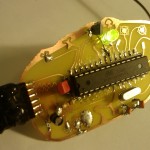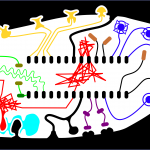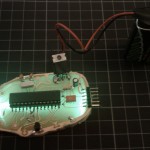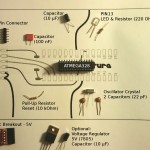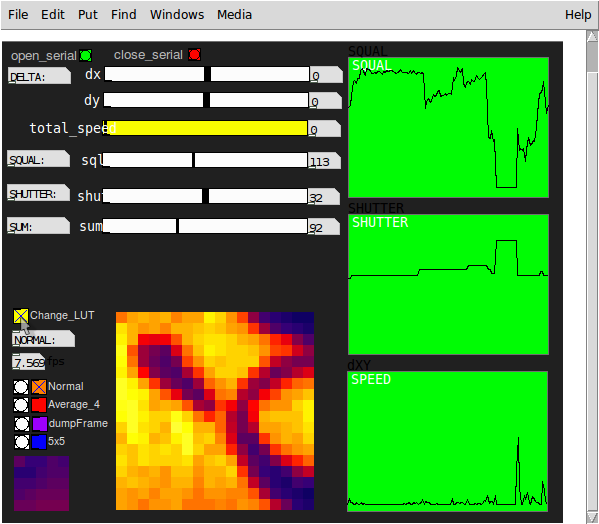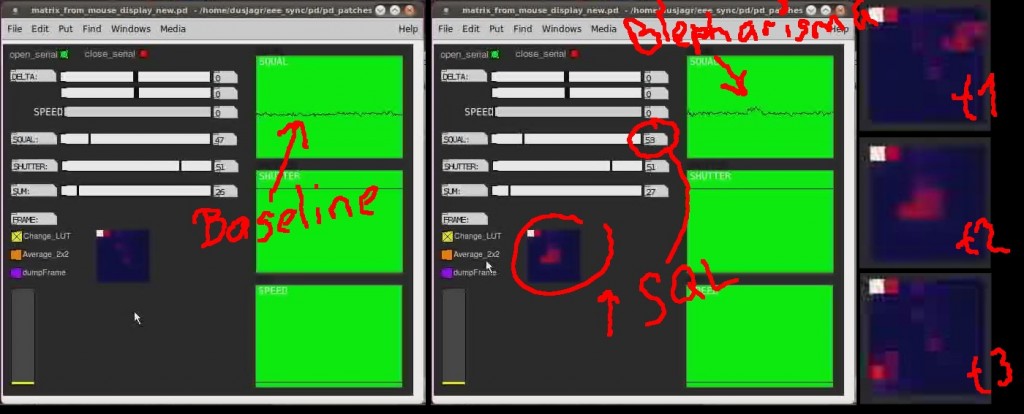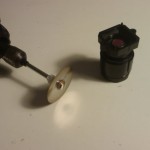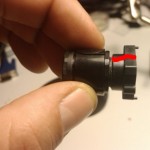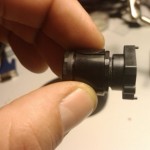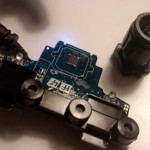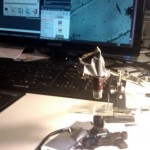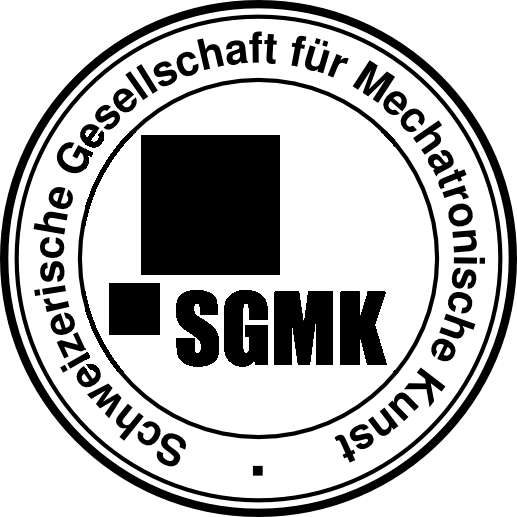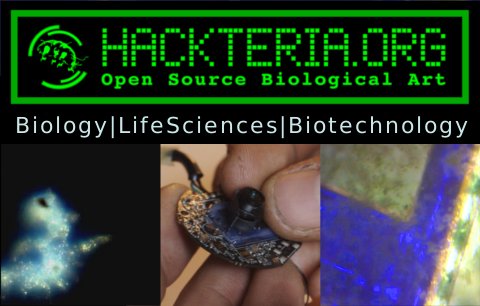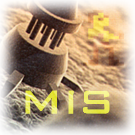Niiiiice, I am back to cellsbutton#04, organized by HONF... the best festival ever!
The first few days were already busy, lots of interesting workshops, parties and discussions. also i met a lot of people, both new but also good old friends. I already got some first soldering action, and tried ways to make a diy version of the diy makeaway bitbadge. sadly i got the wrong site of pcb and cant use the shim for screen printing the solder paste. but with some patience we managed to get a few going...
also had some talks and workshops about new hackteria tools, such as the hacked optical mouse and the hacked PS3 eye mounted on an old microscope stage. i worked with akbar, a young microbiologist from UGM, on it and tested the DIY3 eye microscope for use with a haemocytometer to count yeast cells, which we then presented at the workshop at UGM later.
I was also happy to finally meet Georg Tremel again, from biopresence. He got some great recent work on DIY plant tissue culture and uses it with a blue flower, which is genetically modified for aesthetic reasons. He also did a workshop at UGM and hopefully the "Moondust" will grow there soon... and we got to have him collaborating for hackteria soon!
